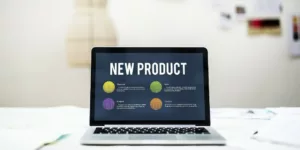With little consensus in the field of B2B product analysts, marketing managers and growth marketers find themselves analyzing many different business metrics to determine success. However, the big question should be how a business states their KPIs. For example, should NPS be used to define KPI? And if NPS is used, then what will be the situation if you have been receiving low NPS scores from most of your paying clients? You should also take into consideration retention and know what your business retention will be like if you set up pre-paid contracts annually over the lifecycle of your contracts with your clients. If this is the case, does the retention from these contract prevent churn, or does it lead to high risk clients creating involuntary churn?
With this information, you will be able to know how to develop a perfect B2B product. You will also know whether to focus on revenue drivers or customer experience drivers. Eventually, you will clearly understand what links business revenue and customers together by clearly measuring the output of the metrics. There are five core qualities that establish B2B analytics separately that can aid us in answering these questions about creating and maintaining B2B products. A profound understanding of all these queries should establish the central part of a business product analytics plan.
With that in mind, here are all of the B2B product analytics you need to understand in order to be successful in the B2b space:
Payer and User Experience
For any SaaS business operating within the monthly subscription plan, there are always diverse personas to you will need to cater to. You will have certain customers who largely need the steady customer experience. The steady customer experience “User” is always an easy tool to share, use and learn, thus providing increased business functionality and individual productivity over a period of time. This tool enables mastering of the individual working universe, which is always the core activity that should be properly focused on. On the other hand, the “Payer” should have a good experience which mostly focuses on the growth of the business product.
The Sales Speed and Purchase Cycle
B2B marketing subscriptions might be the toughest problem to tackle in business growth analytics. It is not only a multi-touch solution, but it is also a multi-week and multi-person one. Your supplementary CRM software may solve issues for managing the sales and purchase process, but it will provide minimal analytical insight on how to improve the sales speed and conversion rates of the process. The insinuation for the product development team is to alter the “Payer” desires over the acquisition cycle. Also, designing the correct product experiences that are personalized enough to move every stage of the sales cycle faster is essential to this process.
Gauging Feature Customer Fit
This is very critical for any B2B product. The sales teams need to be in sync with who their ideal customer personas are and who to look for in their prospect pipeline. Often, when SaaS startups launch, there is always a broadening gap amid the product users and the product prospects pitched by the sales team. For example, if you start operating using SMB software, you will probably need to shift into enterprise software when your sales team is targeting product users. Also, if you developed an e-commerce platform where you get healthcare traction, you will need to invest enormously in security for the business.
B2B Critical Events
In order to establish a sturdy product analysis strategy, it is important to develop B2B critical events for your products. These will in turn be used to signal that the product users obtained the right values from the product. For products which are professionally sold, the critical events become a recurrent pattern of the group’s behavior. Also, for freemium models, critical events which signal the likelihood of conversion are highly important for initial adoptions velocity. By establishing this composite behavior pattern of users who are getting recurrent values from B2B products, the core focus should be shifted to the sales team.
Churn Risk for locked-in B2B Customers
The element that product users are mostly locked temporarily into the business product always makes handling and predicting churn a totally diverse skill set. This is particularly for companies that operate on monthly subscription plans. It is thus critical for the product teams to capitalize on churn forecast. This involves building a deep knowledge of all the behavioral forecasters of both the involuntary and voluntary churn.
The best indicators which can be tracked include the critical events lower count, total account-level dipping of the usage, power users tumbling off the podium or lack of development in adoption of your B2B product. By incorporating these attributes in analyzing the B2B products, you will be assured of positive returns of your business.








